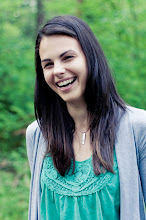Since the children
were so stimulated by the forest exploration, they were driven to express their
interpretation of the animals in the forest.
 Dramatizing is one
way that the children in the Wind group chose to play out these topics. We
worked as a group and prepared the background and materials needed for the
presentation. We wanted the audience to get a better understanding of our
perspective and connect to our ideas. All the children feel that being in the
forest feels good; it makes them happy, more relaxed. The quiet environment
gives them an opportunity to enjoy and observe the surroundings.
Dramatizing is one
way that the children in the Wind group chose to play out these topics. We
worked as a group and prepared the background and materials needed for the
presentation. We wanted the audience to get a better understanding of our
perspective and connect to our ideas. All the children feel that being in the
forest feels good; it makes them happy, more relaxed. The quiet environment
gives them an opportunity to enjoy and observe the surroundings.  The play took place
in the forest (background painted by the wind group children). The characters wore
costumes (individually hand-made) and expressed themselves in such a way that
the audience would understand what character they had chosen to be. Sofia loves
dogs and really wishes that she could have one. Her doggy costume was white
with lots of colourful buttons. Emilie was a ballerina walking her dog in the
forest (the picture will show the curtsy Emilie did in order to thank the
audience for watching). Sofia wiggled her tail to express happiness. Howard was
a red dragonfly, flying from tree to tree. He loves dragonflies because they
are "… very fast and one time, a dragonfly flew close to me and it felt
like a scratch."
The play took place
in the forest (background painted by the wind group children). The characters wore
costumes (individually hand-made) and expressed themselves in such a way that
the audience would understand what character they had chosen to be. Sofia loves
dogs and really wishes that she could have one. Her doggy costume was white
with lots of colourful buttons. Emilie was a ballerina walking her dog in the
forest (the picture will show the curtsy Emilie did in order to thank the
audience for watching). Sofia wiggled her tail to express happiness. Howard was
a red dragonfly, flying from tree to tree. He loves dragonflies because they
are "… very fast and one time, a dragonfly flew close to me and it felt
like a scratch."
Simon was an excited
squirrel, nibbling his peanuts.
 Trystan expressed
himself through body movement and facial expression. He wanted to connect to
the audience in a different way. He wanted the audience to feel scared; this is
the way he feels when he thinks of bears. He is always asking everybody to
"… care for bears and their environment. We share the forest with them and
we need to protect their home."
Trystan expressed
himself through body movement and facial expression. He wanted to connect to
the audience in a different way. He wanted the audience to feel scared; this is
the way he feels when he thinks of bears. He is always asking everybody to
"… care for bears and their environment. We share the forest with them and
we need to protect their home." Byron's presentation was on a different topic. He loves games, especially because they bring him together with his friends. He is very interested in cars. "I like that cars are fast". He is happy when he plays with his friends so this is the feeling that he wants to express.
Byron's presentation was on a different topic. He loves games, especially because they bring him together with his friends. He is very interested in cars. "I like that cars are fast". He is happy when he plays with his friends so this is the feeling that he wants to express.
What a delightful
presentation, full of love, creativity, expression and audience appreciation.












